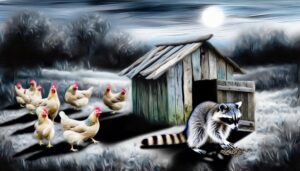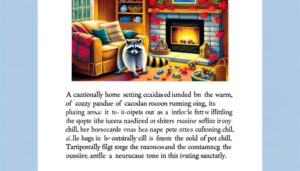How Do Raccoons Get Into Your Attic Entry Points
Raccoons access attics primarily through compromised structural elements such as roof vents, soffits, and chimneys. Weathering, poor installation, and lack of maintenance exacerbate these vulnerabilities.
Raccoons pry open roof vents, exploit gaps in soffits, and climb uncapped chimneys for entry. They cause significant damage by dislodging shingles, vent covers, and gutters, leading to further issues like water damage and reduced insulation efficiency.
Effective preventive measures include installing vent covers, securing soffit gaps, capping chimneys, and regular structural maintenance. For a thorough understanding of raccoon ingress prevention, consider exploring the detailed preventive strategies and maintenance practices.
Key Takeaways
- Raccoons exploit gaps in soffits and roof vents to access attics.
- Dislodged or damaged vent covers provide entry points for raccoons.
- Uncapped chimneys act as direct pathways for raccoons into attics.
- Raccoons pry off shingles or weaken soffits to gain attic access.
- Raccoons climb walls and structures with ease, reaching vulnerable roof areas.
Common Entry Points
Raccoons commonly gain access to attics through vulnerable points like roof vents, soffits, and chimney openings. These entry points often become compromised due to weathering, poor installation, or lack of maintenance, creating ideal conditions for raccoon intrusion.
Roof vents, designed for ventilation, can be pried open by the dexterous paws of raccoons. Soffits, which connect the roof overhang to the exterior wall, may have gaps that raccoons exploit. Chimney openings, if not properly capped, provide a direct route into the attic.
Implementing preventive measures such as installing heavy-duty vent covers, securing soffit gaps, and ensuring chimneys are capped with robust materials can mitigate the risk of raccoon entry, thereby safeguarding the attic space from infestation.
Roof Damage
The compromised entry points that raccoons exploit not only facilitate their intrusion but also contribute to significant roof damage over time. These nocturnal creatures are adept at identifying and exploiting weak spots in roofing materials, leading to various forms of structural deterioration.
Damage can manifest in several ways, including:
- Shingles: Raccoons may pry or tear off shingles, exposing the underlayment.
- Soffits and Fascia: Persistent gnawing and clawing can weaken these critical components.
- Vent covers: Damaged or removed vent covers provide direct access to the attic.
- Gutters: Raccoons often dislodge or clog gutters, exacerbating water damage.
- Insulation: Their nesting activities frequently lead to torn or displaced insulation, reducing thermal efficiency.
Addressing these vulnerabilities promptly is essential for maintaining the integrity of your roof.
Chimney Access
How often do property owners consider chimneys as potential entry points for raccoons, given their remarkable climbing abilities and persistent nature?
Raccoons exhibit exceptional dexterity and tenacity, often accessing homes via chimneys. Due to their ability to scale vertical surfaces and manipulate objects, chimneys without proper caps or screening become prime targets. Once inside, raccoons can cause significant damage to flues and dampers while seeking shelter or nesting sites.
Homeowners should install raccoon-proof chimney caps to mitigate this risk, ensuring they are securely fitted and made of durable materials. Regular inspections and maintenance are essential in identifying vulnerabilities early, thereby preventing raccoon ingress and safeguarding attic spaces from potential infestations and associated damages.
Vent Infiltration
Many homeowners underestimate the vulnerability of vents as potential entry points for raccoons, despite their agile climbing abilities and keen problem-solving skills. Vents, including attic, roof, and gable vents, can be compromised if not adequately secured. Raccoons possess the dexterity to dislodge vent covers or exploit existing gaps.
To mitigate this risk, consider the following measures:
- Install heavy-duty vent covers: Use sturdy materials like metal mesh to deter raccoon intrusion.
- Regular inspections: Conduct periodic checks to make sure vents remain secure and undamaged.
- Seal gaps: Close off any openings around vents promptly.
- Trim nearby branches: Prevent raccoons from accessing vents via overhanging tree limbs.
- Utilize deterrents: Employ raccoon repellents or motion-activated lights to discourage approach.
Implementing these strategies can markedly reduce the likelihood of vent infiltration.
Wall Climbing
Raccoons display remarkable climbing prowess, enabling them to scale walls with ease and access attics through even the smallest of openings. Their sharp, curved claws and highly dexterous front paws provide exceptional grip on various surfaces, including brick, wood, and even metal siding.
Additionally, raccoons possess strong hind legs that facilitate powerful upward thrusts, allowing them to ascend vertically with minimal effort. Their climbing skills are further enhanced by their agile bodies, which can maneuver around obstacles and fit through narrow gaps.
Consequently, raccoons can exploit vulnerabilities in a structure, such as overhanging branches or textured exterior walls, to gain entry. Understanding their climbing capabilities is crucial for implementing effective preventative measures and ensuring the integrity of residential and commercial properties.
Soffit Damage
Soffit damage is a critical issue that raccoons exploit to gain entry into attic spaces. Common entry points often include gaps, rotted wood, and unsecured vents, which raccoons can easily enlarge using their sharp claws and teeth.
These structural weaknesses not only provide access but also compromise the overall integrity of the building, leading to potentially extensive repair costs.
Common Entry Points
One of the most frequently exploited vulnerabilities in residential structures for raccoon ingress is damage to the soffit, the horizontal underside of eaves. Raccoons are adept climbers and can exploit even minor soffit damage to access attics.
The soffit, often constructed from materials like wood or vinyl, can deteriorate over time, creating openings that raccoons can easily enlarge.
Key indicators of soffit damage include:
- Visible gaps or cracks: Small openings can be widened by raccoons.
- Chewed or gnawed edges: Evidence of raccoon activity.
- Warped or sagging sections: Structural fatigue that raccoons can exploit.
- Water damage: Moisture can weaken the soffit material.
- Missing vent covers: Absence of protective barriers facilitates entry.
Proper maintenance and timely repair are essential in preventing raccoon access.
Structural Weaknesses
Understanding the structural weaknesses that contribute to soffit damage is crucial for addressing and preventing raccoon intrusions in residential attics. Soffits, when deteriorated or improperly installed, create vulnerable entry points for raccoons.
Common issues include rotting wood, loose panels, and compromised mesh screens. These weaknesses arise from prolonged exposure to moisture, poor maintenance, or substandard construction materials. Raccoons, with their dexterous paws and strong teeth, exploit these vulnerabilities to gain access.
Effective prevention involves regular inspections, timely repairs, and the use of durable, weather-resistant materials. Employing professional wildlife control services can also guarantee that any existing breaches are adequately sealed, and potential weak points are fortified, mitigating the risk of future intrusions.
Preventive Measures
Implementing effective exclusion techniques is essential for preventing raccoons from gaining access to your attic. Properly sealing entry points and maintaining the integrity of your home's structure can deter raccoons and protect your property.
Here are some recommended preventive measures:
- Inspect and Repair: Regularly inspect and repair any holes or gaps in the roof, soffits, and fascia.
- Chimney Caps: Install sturdy chimney caps to prevent raccoons from entering through the chimney.
- Vent Covers: Securely cover attic vents with heavy-duty mesh to block access.
- Tree Trimming: Trim tree branches that overhang or are near the roofline to eliminate easy access routes.
- Garbage Management: Store trash in raccoon-proof containers and keep them away from the house.
Employing these measures will notably reduce the likelihood of raccoon intrusions.
Conclusion
To conclude, raccoons show a tendency to exploit structural weaknesses like roof damage, chimney access, vent infiltration, wall climbing, and soffit damage to gain entry into attics.
Dealing with these possible entry points through preventive actions is crucial in reducing the intrusion of these nocturnal animals.
By conducting thorough examinations and reinforcing defenses, individuals can effectively reduce the chances of raccoons occupying the space, thus safeguarding the integrity of residential structures and maintaining a peaceful home environment.






